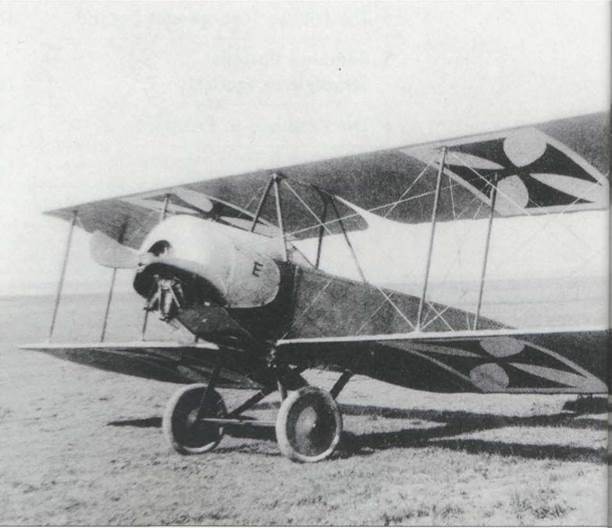GERMAN AND. AUSTRIAN AVIATION. OF WORLD WAR I
|
A |
viation had come a long way in a technical sense during the few short years between the Wright Brothers s first powered flight of 17 December 1903 and the outbreak of World War I on 3 August 1914, but was still very much in its infancy in industrial terms. The war changed that state of affairs very quickly. With the onset of war, aviation became a tool of the military, who, seeing its potential as an "eye in the sky’, gave what had been little more than a cottage industry not just a sense of focus, but, by previous standards, vast injections of cash. Thus, the business of designing and building aircraft was, within the span of less than two years, transformed into a substantial industry in its own right.
However, the military, having taken effective control of the industry, did far more than simply inject cash, they infused the business of aircraft manufacture with a sense of direction and discipline, from which flowed such useful
practices as methodical crash investigation and the whole culture of flight safety as applicable to both design and operations. Meanwhile, as the war progressed, the military was, itself, learning and becoming more organised and, in the process, discovering an ever broader range of requirements for which aircraft could be adopted. To cite two important examples, while the Italians had dropped the first bomb from an aeroplane as early as 1911, the problems of organised aerial bombing were only addressed once war was declared. Similarly, while a number of nations had experimented with fitting guns to aircraft prior to the war, the emergence of the dedicated fighter aircraft only really came about in the early months of 1915, as a counter to the highly effective intrusiveness of enemy reconnaissance overflights.
The military suffered the occasional setback as they stumbled along the learning curve of just how to employ aircraft. This was particularly so in Germany where the pre-war

efforts of Graf von Zeppelin and the sheer scale of his airships had seemingly made an indelible impact on the German national psyche. As it transpired, the Zeppelin and other makes of military airship never lived up to their inital promise and although the German Imperial Navy resolutely clung to operating airships throughout the war, the German Army harboured few illusions concerning airship vulnerability and abandoned their use long before the Armistice.
While the impact of World War I on the development of the aircraft industries within many nations was of overall massive benefit in terms of growth, both physically and financially, the same could hardly be said when it came to evolving the aircraft technically. Indeed, recalling the grace and speed achieved by such aircraft as the 1913 Deperdussin racing monoplane, the first two years of war saw many seemingly retrogressive developments. The elegant monoplanes of the immediate pre-war years largely gave way to the biplane, whose undoubtedly more robust, box-structure double wing form found favour with the cautious military mind. During this period the emphasis switched from speed to load-carrying capability
as aeroplanes were crammed with cameras, guns or bombs, causing typical top speeds to drop off at a faster rate than they had progressed in the two years prior to war! This innate military conservatism towards the fundamental development of aircraft is, at least in part, explained by the ever-present pressures to produce quan – titavely more of the same, rather than fewer, or the same amount, of something better. This apparent apathy on the part of the military towards pushing the boundaries of aircraft design, it should be noted, was just as manifest in France, which at the outset of the war was the most technologically advanced of all the aircraft producing nations, as it was among the more laggardly countries. This said, it is interesting to note that when an aircraft builder, such as Hugo Junkers or Claudius Dornier came up with a really radical design, it was seldom dismissed out of hand. This was particularly true of the German Army, who, regardless of their reputation for ‘doing things by the book’ provided Junkers with the necessary financial support over an extended period, at a time when each new design from his drawing boards appeared to be a worse performer than his last.

Typical of the two seat reconnaissance biplanes in service with the German Imperial Air Service at the outbreak of war was this Gotha B. First flown at the start of 1914, the LD-1a became the B on entering military service, signifying it to be the first biplane type purchased from the firm. Had it been a monoplane, it would have carried the military designation Gotha A, with subsequent types becoming Gotha A 2s or B 2s, etc. Powered by a lOOhp Daimler D I, the prototype was followed by ten further examples, 458/14 to 467/14, these machines differing from the first in being fitted with a lOOhp Oberursal copy of the original Gnome Monosoupape, as seen here. The Gotha B’s top level speed was 7l. 5mph, while its maximum range was 323 miles. (Cowin Collection)










